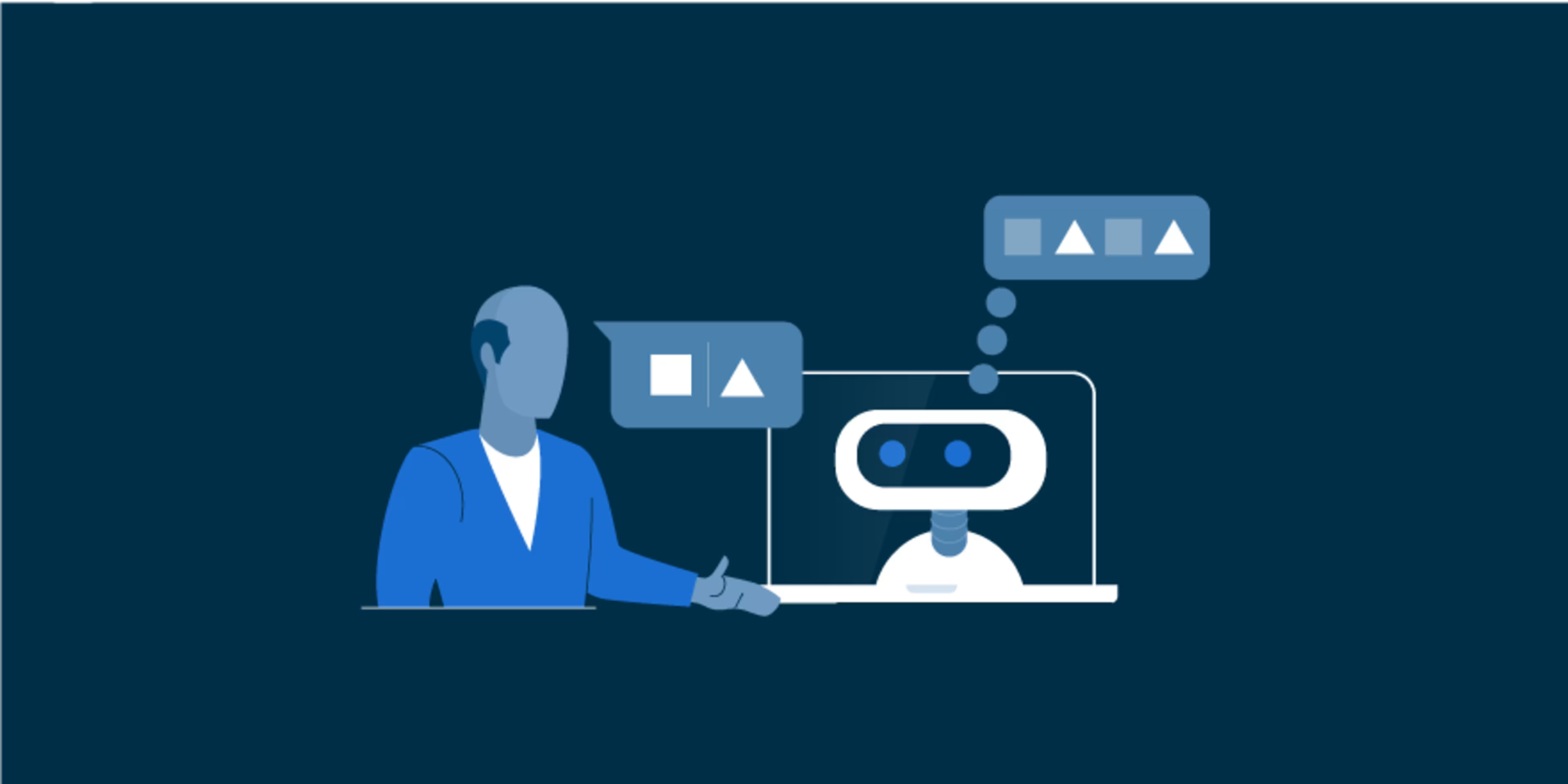Machine learning doesn’t have to be mystifying. We’ll break down the two most common types and their use cases in this article.

As a business leader, you know that adopting new technology can alleviate pain points and make your business more competitive. That’s why during a year of disruption, many businesses turned to digital transformation to make it through.
You may also be aware of the potential of emerging technologies like machine learning that can make your business future-proof. But buyer beware—if you don't understand the applications of machine learning, you risk wasting money on unusable results. Take the example below to see what we mean.
In order to prepare to write this article, we used a natural language generation (NLG) tool to help us understand how to best break down supervised versus unsupervised learning. Here is an excerpt from our NLG counterpart:
Each unsupervised learning model provides ahead tensorong matrices based on the correlation coefficient, false positive response, pretty minimal statistically useful data (or heavily dependent on it), is used for dimensionality reduction using graphs and trees to generate their own limits data points.
Feeling confused? Us too. But despite the bewildering syntax of the NLG tool’s sentences, this experiment with artificial intelligence (AI) was not completely unhelpful. It made us realize that when it comes to getting the best results out of AI, finding the right application matters—which is exactly why we wrote this guide to help you.
We spoke with Thomas Wood, a data science consultant for Fast Data Science, and he helped break down the topic in easy-to-understand terms. With the help of Wood, we’ll explain the difference between two common machine learning methods, supervised and unsupervised learning, and what use cases are best suited to each method.
New to machine learning? Review these key concepts before diving in to the rest of this article:
Machine learning (ML) is a subset of artificial intelligence (AI) that solves problems using algorithms and statistical models to extract knowledge from data. Broadly speaking, all machine learning models can be categorized into supervised or unsupervised learning.
An algorithm in machine learning is a procedure that is run on data to create a machine learning model.
A model in machine learning is the output of a machine learning algorithm run on data. Meaning, a model represents what was learned by a machine learning algorithm.
What are the main differences between supervised and unsupervised learning?
If we had to boil it down to one sentence, it’d be this: The main difference between supervised learning and unsupervised learning is that supervised learning uses labeled data to help predict outcomes, while unsupervised learning does not.
However, there are additional nuances between the two approaches, which we will continue to clarify so you can choose the best approach for your situation.
How supervised machine learning works
Like we mentioned above, supervised learning uses labeled data to train the model. But what does that mean in theory? Let’s walk through some examples to start.
With supervised learning, the model is provided both inputs and corresponding outputs. Suppose we are training the model to identify and classify different kinds of fruits. In this example, you will provide several pictures of fruits as the input, along with their shape, size, color, and flavor profile. Next, you’ll provide the model with the names of each fruit as your output.
Eventually, the algorithm will pick up a pattern between the fruits’ characteristics (the inputs) and their names (the outputs). Once this happens, the model can be provided with a new input, and it will predict the output for you. This kind of supervised learning, called classification, is the most common.
How unsupervised machine learning works
Contrarily, unsupervised learning works by teaching the model to identify patterns on its own (hence unsupervised) from unlabeled data. This means that an input is provided, but not an output.
To understand how this works, let’s continue with the fruit example given above. With unsupervised learning, you’ll provide the model with the input dataset (the pictures of the fruits and their characteristics), but you will not provide the output (the names of the fruits).
The model will use a suitable algorithm to train itself to divide the fruits into different groups according to the most similar features between them. This kind of unsupervised learning, called clustering, is the most common.
Need to run through the two machine learning models one more time? Check out this short video for a high-level explanation:
When should supervised learning vs. unsupervised learning be used?
Whether you should use supervised or unsupervised learning depends on your goals and the structure and volume of the data you have available to you. Before making a decision, have your data scientist evaluate the following:
Is the input data an unlabeled or labeled dataset? If it’s unlabeled, can your team support additional labeling?
What is the goal you want to achieve? Are you working with a recurring, well-defined problem or will the algorithm need to predict new problems?
Are there algorithms that support your data volume and structure? Do they have the same dimensionality you need (number of features or attributes)?
When to use supervised machine learning
According to Gartner, supervised learning is the most popular and most frequently used type of machine learning in business scenarios. This is likely because although classifying big data can be a real challenge in supervised learning, the results are highly accurate and trustworthy (full source available to clients).
Here are some examples of use cases for supervised learning. Some are industry-specific, while others can apply to any organization:
Identifying risk factors for diseases and planning preventive measures
Classifying whether or not an email is spam
Predicting house prices
Predicting customer churn
Predicting rainfall and weather conditions
Finding out whether a loan applicant is low-risk or high-risk
Predicting the failure of mechanical parts in automobile engines
Predicting social media share scores and performance scores
Wood shared with us an example of how he used supervised learning to build a triage system for a client’s incoming emails. With the help of a CRM system, emails were categorized into groups that represented common queries (e.g. customer changing address, complaints). Wood then used these categories to train a model so that when it receives a new incoming email, it will know which category to assign that email to. He says:
Supervised learning was possible in this case due to the presence of the CRM system which provided a set of 'labels' to train the model. Without these, only unsupervised learning would have been possible.
Want to clean up your inbox? Get started with CRM software.
When to use unsupervised machine learning
In contrast to supervised learning, unsupervised learning can handle large volumes of data in real time. And because the model will automatically identify structure in data (classification), it’s useful in cases where a human would have a hard time finding trends within the data on their own.
For example, if you were trying to segment potential consumers into groups for marketing purposes, an unsupervised clustering method would be a great starting point.
Here are some examples of use cases for unsupervised learning:
Grouping customers by their purchase behavior
Finding correlations in customer data (for instance, people who buy a certain style bag may also be interested in a certain style of shoes)
Segmenting data by purchase history
Classifying people based on different interests
Grouping inventories by manufacturing and sales metrics
Wood explained to us that he once worked for a pharmaceutical company with manufacturing facilities around the world. The software the company used to record errors that happened in their facilities did not have a drop-down menu with common error options to choose from.
Because of this, factory workers documented errors in plain text (either in English or their local language). The company wished to know the causes of common manufacturing problems, but without a categorization of the errors it was impossible to perform statistical analysis on the data.
Wood used an unsupervised learning algorithm to discover commonalities in the errors. He was able to identify the biggest themes and produce statistics such as pie-chart breakdowns of the common manufacturing problems in the company. Wood says:
This gave the company an at-a-glance overview of the problems in their business which would otherwise have required considerable manual work.
Prepare for a smart future: Embrace machine learning
Machine learning is a powerful tool that can help you solve business problems and make data-driven decisions. Hopefully this article gives you some ideas about how supervised or unsupervised machine learning could be implemented at your organization.
If you’re ready to embrace machine learning technology, your next steps should be to evaluate the capabilities of your current software stack. Then, ask your vendor(s) for use cases from other clients in your industry that align with the applications you’d like to use machine learning for.
Feel like there’s more to learn? Check out these related readings from Capterra:
Thinking about hiring a machine learning company for your business needs? Browse our list of top machine learning companies and learn more about their services in Capterra’s hiring guide.
Also, check out Capterra’s machine learning software directory, where you can read reviews from real users and filter tools by their price point or features.
